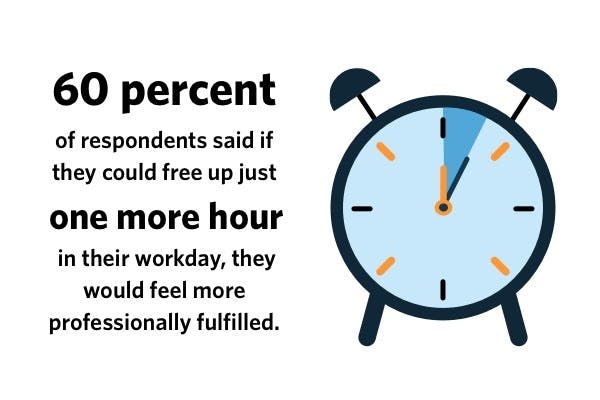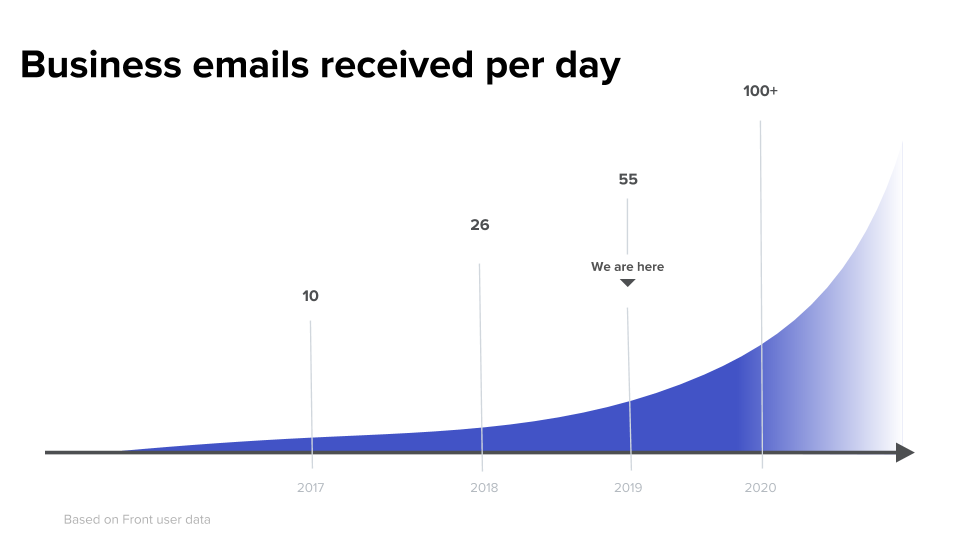It’s never been tougher to attract and retain high performing talent. According to a recent report by Mercer, two in five employees are planning to leave their organization in the next 12 months.
In addition, 97 percent of C-suite executives predict an increase in competition for talent during the same period. Compound that with the emergence of Gen Z (those born after 1995) in the workplace and leaders are being forced to rethink how they will keep employees engaged and happy and make them most effective.
Where perks like unlimited vacations, free lunches, and nap rooms became popular ways to attract millennial workers, increasingly, today’s workers simply want more time every day to do what matters to them. Indeed, according to Mercer, 54 percent of employees say managing their work/life balance is one of the top five things their company can do to help them thrive at work (compared to 40 percent in 2018 and 26 percent in 2017).
Flexible schedules, remote work, and generous paid time off policies can certainly address an employee’s work/life balance needs. But there’s also an opportunity to make employees more efficient every day.
We know that knowledge workers spend a great deal of their time — an average of 41 percent — on discretionary activities that offer little personal satisfaction and could be handled competently by others. Eliminating some of these activities could unlock more time in a person’s work day. In fact, 60 percent of respondents in a recent Front survey said that if they could free up just one hour in their work day, they would feel more professionally fulfilled.

How do you make this happen? According to Mercer, thriving employees are almost three times more likely to say their organization provides the tools they need to do their job efficiently. Enabling people to work more efficiently gives them the time they need to be fulfilled at work.
What takes up all our time?
People often feel that meetings suck up their work days. If you’re a middle manager, meetings likely take up about 35 percent of your time, and if you’re in upper management, it can be a whopping 50 percent.
But there’s another sneaky culprit demanding your attention: email. People spend roughly four hours per day doing email at work. That’s 43 days per year or five years of your life!

If you’re an upper manager, an eight-hour work day can be completely filled with meetings and email. When are you meant to do thoughtful, strategic work?
Indeed, just 43 percent of people feel they have enough time for focused work in a typical work day, and 59 percent believe that more time for focused work would make them more professionally fulfilled.
In many cases, it’s the tools that were designed to make us more productive that are holding us back. Some of the things that frustrate employees and make them inefficient include: switching between tools for different tasks, information scattered across tools, and too many distracting notifications.

Email is the ripest opportunity for efficiency gains
Why do we spend so much time in email? Because it’s the universal communication tool for work.
There are more than 1 billion people that use email at work. When it comes to communicating about business,86 percent of workers prefer email. More than half of knowledge workers say email would be the most difficult tool to work without.
According to Front’s data, the average knowledge worker receives 55 business emails per day. In 2018, it was 26 and in 2017 it was just 10. If this trend continues, we can expect the average knowledge worker to receive more than 100 emails per day in 2020. Of course, this is higher for certain people. Front’s CEO already averages about 300 emails per day.

And all this emailing is taking a toll: 70 percentof people who reported that their work is very stressful have seen the amount of email they send and receive increase in the past year.
That could be because it’s really difficult to disconnect from email, even after you’ve left the office.
22 percent of people say they check work email multiple times per hour or constantly outside of work.
More than62 percent of travelers check their work email and voicemail while on vacation.
41 percent of people said they check work emails while watching TV each night.
31 percent of people said they check work emails in bed at night.
Email is critical to work, filling 50 percent of a standard work day and bleeding into personal time too. But it’s clear there’s a tremendous opportunity to cut back the amount of time spent in email and perhaps give people time to be more fulfilled. In fact, efficient email for teams has been proven to save people 6 hours per week — or more than one hour per day.
How to give your employees one more hour per day
You want to give your people more time, but all that work still needs to get done. How do you manage it?
Create a culture of trust and accountability
In workplaces that lack trust, people often cling to less important tasks and responsibilities for fear that relinquishing them might cut off their access to information and make them look less busy. If you instead trust employees with information and make it readily accessible, you can eliminate the office politics that come with access to information. You can also empower people to make the right decisions — enabling quicker decision making and perhaps, fewer meetings.
How do you make this information accessible to your team? Ninety-three percent of Front customers who regularly share their entire inboxes or individual email chains with colleagues reported that they were more efficient and effective as a result of this transparency.
Ninety-three percent of Front customers who regularly share their entire inboxes or individual email chains with colleagues reported that they were more efficient and effective as a result of this transparency.
It begins with trust, but to effectively delegate tasks to others, you also need a way to hold people accountable to their work. Project management tools as well as assignments in Front are great options for delegating work and staying informed of and reporting on progress.
Automate menial tasks
A typical work day is full of the same tasks done over and over again. We reply, archive, label, and delete. We mark as unread, forward, cc, enter data into CRMs, copy ideas into project management tools…the list goes on. Think of all the time you’d get back if you didn’t have to worry about those time-consuming, repetitive tasks.
A tool like Zapier can help you automate parts of your workflow. For example, it can automatically create tasks in your project management tool from your note taking app. Or generate new meetings from actions in your other planning and organizational tools.
Of course, there’s also a lot that can be done to automate email, helping you reduce the clutter of your inbox and get work done faster. Here are a few ideas of repetitive email tasks you can automate with Front:
Assign emails containing a certain keyword to the relevant person (ex: everything that includes “billing” gets routed to the accounting manager)
Add tags to emails so you can quickly scan your inbox for urgent items (ex: anything that comes in from a priority customer)
Archive emails you don’t really need to read (ex: calendar accepts or CRM record updates)
Machine learning tools can also help automate workflows with another level of precision. Tools like MonkeyLearn, Forethought’s Agatha Answers, and Ada work together with Front to make business email smarter and enable teams to automate:
Personal email replies
Locating information to send in email replies
Organizing emails by complex triggers
Create guidelines for efficient internal communication & collaboration
How many times have you sat in a meeting for a topic that could have been addressed via email? Or, been on a painfully long and confusing email or chat thread that could have been handled much more efficiently in a quick meeting? Significant workplace frustration and inefficiency can come from people using the wrong communication or collaboration method.
While every workplace may have different preferences, feel free to take some inspiration from Front’s internal communication and collaboration guidelines. The highlights include:
Email when: The idea at hand is reactive, requires deep thinking, and will yield an anecdotal response.
Chat when: The ideas at hand are informative, requires shallow thinking, and will yield a direct response.
Meet when: The ideas at hand are reactive, requires deep thinking, and will yield dialogue as a response.
Give your employees balance and fulfillment with the tools to be more efficient at work
Think about what you could do with more time in your day. What personal and professional fulfillment could it bring you?
When asked what they would do with one more hour in their day, 38 percent of knowledge workers said exercise while 30 percent said spend time with family or friends. Studies have proven that exercise and the freedom to be present for personal commitments increases an employee’s productivity and happiness.
That extra time in the work day can also mean more time for strategic work. Glenn Poulos, co-founder, Vice President and General Manager of Gap Wireless, has freed up 50 percent of his time with efficient email for teams.
“Now, when I return to my desk after a block of meetings, I am able to focus on growing the business, not on sorting through the emails my staff has already taken care of."
As Front co-founder and CEO Mathilde Collin has learned, the trick to maximizing your available time is to decide what you will do with your extra time so it isn’t instantly swallowed up by other tasks that don’t fulfill you. She plans her weeks in advance — setting intentions and scheduling time to work on specific projects on her calendar — and then reports on whether or not she stuck to her goals each week.
Giving employees the tools to work more efficiently and be fulfilled by spending their time in more meaningful ways is a surefire way to help them thrive.
Written by Heather MacKinnon
Originally Published: 17 April 2020

